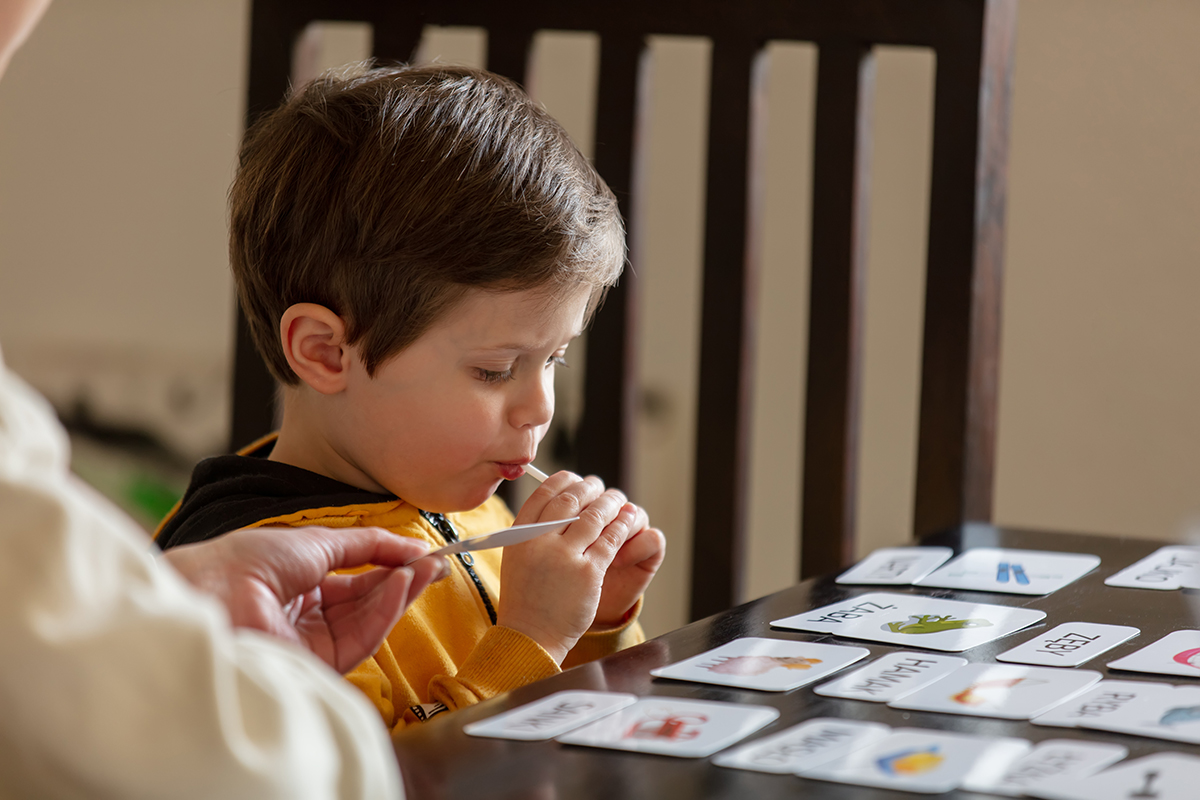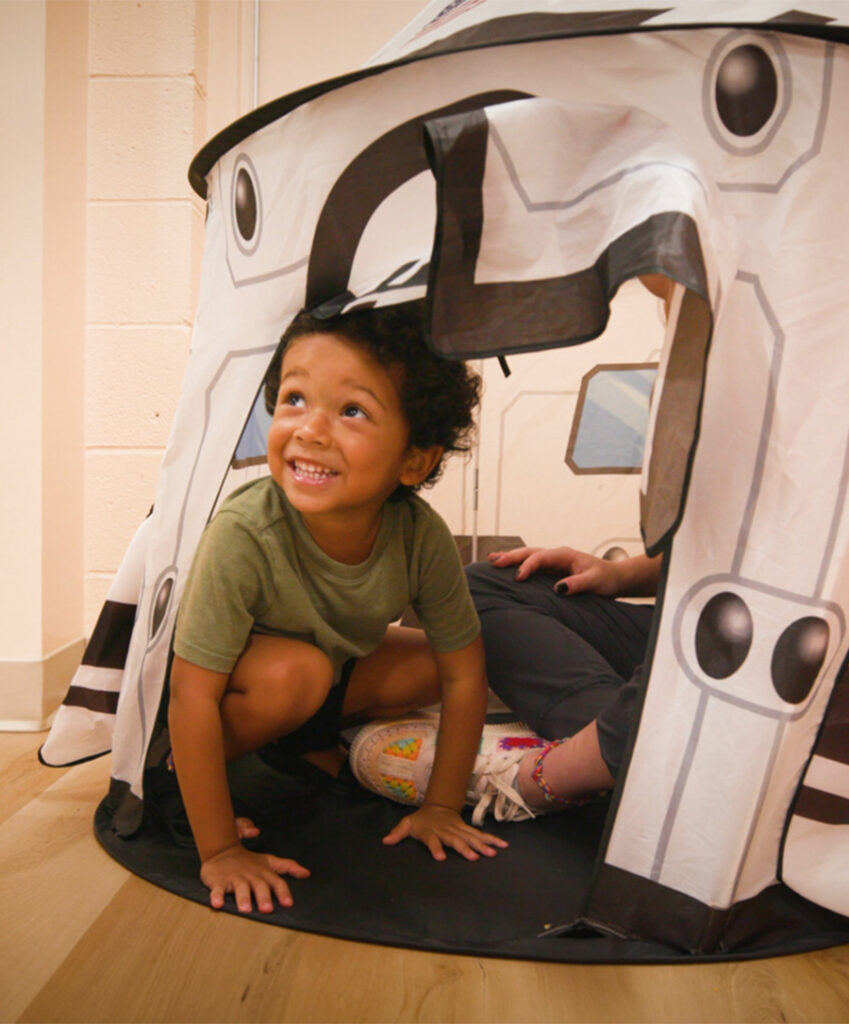Just like all children, children diagnosed with autism experience the world in unique ways. These experiences can bring joy and discovery, but can also lead to periods of stress, sensory overload, or emotional dysregulation. As a parent, learning how to support your child during difficult moments often begins with understanding what helps them feel safe, calm, and in control.
Self-soothing techniques are an essential part of emotional development for all children. In Applied Behavior Analysis (ABA) therapy, helping children learn to self-soothe is one way to build independence, improve emotional regulation, and support success in daily routines.
Exploring what self-soothing behaviors can look like, how to encourage them at home, and what role ABA therapy plays in teaching these essential skills can help parents and caregivers create a more supportive environment.
What are the signs of emotional dysregulation?
Emotional dysregulation refers to difficulty managing emotional responses in ways that are expected for a given situation. In children with autism, this may be tied to changes in routine, sensory sensitivities, communication challenges, or anxiety. The signs can vary from child to child, but some of the most common indicators include:
- Sudden or intense emotional reactions to minor frustrations
- Difficulty calming down without support
- Repetitive behaviors that increase in speed or intensity
- Refusing previously enjoyed activities or interactions
- Verbal or physical frustration, such as yelling, throwing, or retreating from others
- Withdrawal or shutting down in response to stimulation
These responses are not “bad behavior.” They are signs that a child’s internal emotional state is overwhelmed. Recognizing these cues early can help caregivers support calming strategies before distress escalates.
In ABA therapy, behavior analysts examine the context and function of behaviors. They then develop plans that teach children how to identify rising emotions and choose healthy ways to manage them.
What are self-soothing behaviors?
Self-soothing behaviors are actions children use to help themselves feel calmer and more regulated. These can be physical, sensory, or emotional in nature. For example, some children might sway, hum, squeeze a favorite object, or seek out quiet spaces.
Self-soothing is not about suppressing emotions. It’s about helping a child find tools that bring comfort and support. In many cases, these behaviors develop naturally. Other times, they are modeled, reinforced, and shaped over time through therapy or caregiver guidance.
For children with autism, self-soothing behaviors might include:
- Rocking or swaying
- Deep pressure through hugging or weighted items
- Using a sensory toy like a fidget or textured object
- Covering ears or retreating to a quiet space
- Watching a favorite video or listening to calming music
- Repeating phrases or scripts that bring familiarity
The above are examples of strategies that may help a child reduce stress and regain control. While not every technique works for every child, a growing toolbox of options gives them more autonomy and resilience across environments.
How to encourage self-soothing behaviors
Encouraging self-soothing starts with observation. Each child has different preferences, triggers, and calming responses. Caregivers can support self-soothing behaviors by recognizing what works for their child and reinforcing those strategies consistently.
Create a calm-down space
Designate a quiet, comforting area in the home with soft lighting, pillows, noise-canceling headphones, or familiar sensory items. Having a go-to place that feels safe helps children associate it with regulation and recovery.
Offer choices
Let your child choose from a few preferred calming tools, such as a sensory toy, a soft blanket, or a picture book. This supports independence and helps them learn how to self-soothe in a way that feels right to them.
Narrate emotions
Use simple language to label your child’s emotional state. For example: “I see you’re feeling frustrated. Let’s take a break and squeeze your favorite pillow.” This encompasses both acknowledgment and action.
Reinforce positive coping
When your child uses a self-soothing behavior successfully, respond with praise or a small reward. Over time, these techniques become more automatic and self-directed.
Build in breaks
Anticipate challenging moments in your child’s routine and proactively include calming activities, like quiet time after school, deep breathing before transitions, or sensory play between appointments.
Supporting emotional regulation means helping your child safely and meaningfully navigate strong feelings.
How to teach self-soothing to children with autism
In ABA therapy, self-soothing is often taught using structured programs based on the child’s developmental level, preferences, and communication style. Board-certified behavior analysts (BCBAs) break down self-regulation into manageable steps and use data to track progress.
Here are some common strategies behavior analysts use to teach self-soothing techniques:
Modeling and role play
Therapists or caregivers can demonstrate the behavior by squeezing a stress ball, putting on headphones, or choosing a calm-down spot, then support the child in doing the same.
Visual supports
Picture cards, visual schedules, or emotion thermometers can help children connect internal feelings to specific actions. For example, a picture of “feeling mad” might be paired with a calming strategy like squeezing putty.
Functional behavior assessments
Before introducing a self-soothing plan, clinicians conduct assessments to determine the reason behind challenging behaviors. This ensures the replacement strategy truly meets the child’s needs.
Reinforcement
Each successful use of a self-soothing skill is positively reinforced, helping the child build confidence and motivation to repeat it.
Generalization
Skills are practiced across settings, at home, at school, and in the community, so the child can use them wherever stress may arise.
Self-soothing looks different for every child, but with time, consistency, and support, these tools can become second nature.
What is the difference between self-soothing and stimming?
Parents often hear both “self-soothing” and “stimming” when talking about behaviors related to autism, and while they may look similar, they are not the same.
Stimming refers to self-stimulatory behaviors, such as flapping, spinning, humming, or tapping. These behaviors are often repetitive and can serve a variety of purposes: regulating sensory input, expressing excitement, or helping focus. Stimming is common among people with autism and is not inherently negative.
Self-soothing, by contrast, refers to behaviors that help a child regulate emotions or calm themselves when stressed or overstimulated. These actions are often intentional and goal-directed, even if the child doesn’t consciously label them that way.
Understanding the difference between stimming versus self-soothing can help parents respond appropriately. While some stimming behaviors may be soothing, not all are used in moments of distress. Conversely, self-soothing techniques are more likely to be used specifically to manage emotional dysregulation.
In ABA therapy, the focus is not on eliminating stimming but instead on understanding its function and supporting the child in using self-soothing techniques that are adaptive, accessible, and comfortable in a variety of environments.
12 self-soothing techniques that support emotional regulation
Here are 12 common self-soothing techniques that may be helpful for children diagnosed with autism. These can be introduced at home or reinforced through ABA therapy sessions:
- Deep pressure input: Weighted blankets, compression clothing, or tight hugs can offer calming sensory feedback. These tools support body awareness and can be especially helpful during transitions or high-stress moments.
- Breathing exercises: Blowing bubbles, using pinwheels, or practicing “smell the flower, blow out the candle” breathing techniques can help regulate breathing. They also give children a concrete action to focus on when emotions feel overwhelming.
- Squeezing stress toys: Fidgets, squishy balls, or putty offer tactile input and a repetitive motion that promotes calm. This kind of hand-based activity can also improve focus and fine motor coordination over time.
- Listening to music: Preferred songs or instrumental tracks can support relaxation and emotional grounding. Music can serve as both a sensory regulation tool and a predictable comfort during daily routines.
- Movement breaks: Jumping on a mini trampoline, swinging, or stretching can help discharge excess energy. Short bursts of movement also help children re-engage with tasks that require attention or patience.
- Watching calming visuals: Slow-moving lava lamps or looping videos of nature can soothe the visual system. These visual supports may reduce overstimulation and offer a gentle distraction during periods of distress.
- Using a chewable necklace: Oral sensory input can help redirect stress-related chewing or mouthing behaviors. It’s a discreet option that allows children to self-regulate without drawing unwanted attention.
- Sensory bins: Filling bins with rice, sand, or water beads allows for repetitive, calming play. This kind of play encourages both sensory exploration and self-directed quiet time.
- Reading or looking at books: Familiar images or storylines can bring comfort, especially with quiet space. Books also support language development and can become part of a personalized calming routine.
- Cocooning in a blanket: Being wrapped up or tucked in can create a sense of security. This technique is often used before bed or after a stressful event to help restore emotional balance.
- Using a visual schedule: Predictability and structure reduce anxiety and help children prepare for transitions. Having clear expectations in picture form gives children a sense of control and reduces uncertainty.
- Practicing grounding techniques: Simple practices like naming five things you see or touching different textures can anchor attention. These strategies help shift focus away from stress and back to the present moment in a manageable way.
These calming strategies can be introduced gradually, tailored to your child’s preferences, and supported through collaboration with your ABA provider.
Contact us to learn how we can help
If your child is struggling with emotional regulation or if you’re wondering how self-soothing can be taught and supported through ABA, Children’s Specialized ABA is here to help. Our BCBAs and clinicians work closely with families to understand each child’s unique needs and build skills that support lifelong growth.
We proudly serve communities across New Jersey, North Carolina, Maryland, and Arizona, offering home-based and center-based ABA therapy, diagnostic evaluations, early intervention, speech and occupational therapy, and more. Whether your child is just beginning their autism journey or building on existing skills, we’re ready to meet them where they are and help them move forward with confidence.
Complete our online form or call 201.979.0772 today to learn more.






